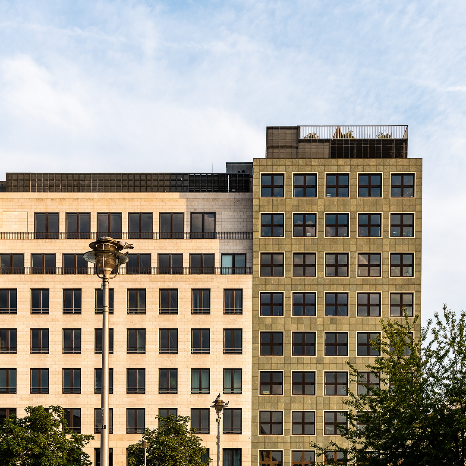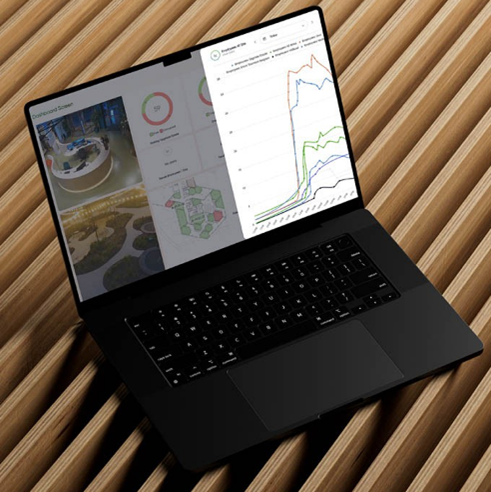Blog
IDL vs Trigrr – get control from your data

Game-changer for property management
In the world of real estate, effective use of data can be a game-changer, helping to ensure occupier comfort and satisfaction, increased efficiencies, reduced energy consumption and lower operating costs. It can also support accurate ESG reporting, for any scale of building, mixed used development or property portfolio, by closely tracking performance on multiple criteria over time.
However, with so many devices and machines collecting so much data, many organisations are drowning in it. They don’t know how to interrogate the data they have and are missing out on opportunities to make fundamental, beneficial changes that can improve building management and performance. This is usually because they don’t have the inhouse capabilities to understand their data. Nor do they have a grasp on how AI can help them get to grips with all the data they have.
Data in commercial real estate
Today, data collection in commercial buildings is taking place on a massive scale and some owners and asset managers have realised they need to get a better overview of it via a data platform where at least energy and comfort data can be aggregated and monitored. This is where an Independent Data Layer (IDL) comes in.
An IDL is middleware infrastructure that normalises data into proscribed forms and collates it into a centralised system. Meaning data is accessible from one location, rather than multiple locations/cockpits for each individual vendor.
However, collation in a structured form is where the service ends. The data is read only. The building operator still needs to analyse the data and work out what to do with the insights gained. An IDL doesn’t enable easy decision-making or control and it definitely doesn’t enable these things in real time, because the IDL user still needs to call the facilities team, for example, to adapt building management system (BMS) settings.

Enabling smart building automation
In contrast, a building operating system that enables two-way communications with all building systems can achieve a complete smart approach. Trigrr does just that. Every piece of data collected from all your building systems feeds into an integrated single platform – viewable from a laptop or smart device – where you can establish automated settings for what happens when.
For example:
- Creation of a ticket in the CAFM system when an error occurs with the elevator
- Closing of a floor to reduce energy costs when the access control system confirms the floor is empty
- Ensuring a preset temperature is reached to create the right comfort level when people have a meeting room booked
- Establishing when solar panel production is low and EV charger consumption should be optimised to avoid electricity over-consumption.
Drive efficiency in your building operations
Data from your building systems, integrated into the Trigrr building operating system (BOS), gives you significant automation and control. It’s why we call Trigrr the building opportunity system. There are multiple opportunities to reduce energy use, make cost savings, ensure the comfort of occupiers, and to enable a frictionless environment. One that demands little attention from occupiers, who would prefer to be focussing on their real business not facilities management.
With Trigrr, it’s also easy to add another building system and enable it to talk to others, without the investment of an additional tech stack. Our metalanguage Trigrrnometry makes that possible and enables data from the new building system to be captured.
The reporting capabilities with Trigrr are also exceptional, with up-to-the-minute reports available on real time performance, as well as performance information being available for longer periods of time – whatever length of time you need. Both forms of report enable a deeper level of insight and feed into credible ESG reporting, plus the achievement of energy reduction and carbon net zero goals.

Summing up the benefits of BOS
Collecting data is just the start of the journey for optimising your building operations. An IDL will take you a few steps forward by:
- Collecting your data into one place
- Presenting it to you in a structured form
- Enabling you to start your analysis
- Informing teams of BMS adaptions needed
The alternative is a BOS like Trigrr. For almost the same price as an IDL, you can have a full smart building experience that generates a demonstrable ROI:
- Trigrr interprets and responds to BMS data for you based on the settings you put in place
- It connects all your building systems enabling two-way communication between them
- Room and space settings become automated removing time-consuming manual adjustments from your workload
- You can guarantee a high level of service to occupiers making them comfortable in real time
- Up-to-the-minute reporting gives you additional insights when queries arise
- Tracking over time supports your vital ESG performance and reporting


